Description
Abstract
A product should NOT be launched directly over the ASSET because of risk of fall, BUT
What is the RISK that a DROPPED PRODUCT of mass M shall cause FAILURE of the ASSET when (accidentally) dropped from a certain distance D ?
Keywords: Risk, Dropped Object, Asset, Failure
Introduction
This spreadsheet based software tool is used for assessing the required offset of the lowered PRODUCT(s) using crane next to an ASSET. The approach is based on DNV-RP-F107 which is a Risk-based
approach to assess the following :
– Offset of the “unintended/accidental” drop point of a PRODUCT (anchor, subsea template, subsea trencher/plough etc.) from a pipe
– Offset of the “intended” drop point of a PRODUCT (anchor, subsea template, subsea trencher/plough etc.) from a pipe
– Required length of protection of the protected pipe
– Limit the number of intended lifts at a certain location
– Redesign the lift with additional speed dampeners
Philosophy: BASED ON DNV-RP-F107
The sheet evaluates RISK OF FAILURE of the pipe due to Drop events.
Risk is calculated as a product of = Frequency of a drop event X Consequence of the accidental event
Probability of the drop is calculated in the form of a Gaussian distribution where the probability drops further as the OFFSET increases.
The distribution is the result of multiple experiments conducted for various representative shapes of objects under lateral deviation angle (due to typical weight and current) and water depth.
Typically, a heavier object has smaller angular deviation than the light object.
If the probability of hit is less that 1E-5 (typical for pipes with high safety factor) , the probability of failure due to dropped object is ALSO negligible and hence the Offset is acceptable.
If not,
the CONSEQUENCE ANALYSIS is to be performed
Whereby, the ENERGY of impact is calculated.
Instead of a unique impact energy, the drop impact energy is split into energy bands, where drop frequency (calculated above) is sub-divided into these energy bands by multiplying it into weight percentage.
The bands are given the weightage factors depending on SHAPE and MASS of the object (a well spread distribution for light weight, high energy weightage is given for heavy objects)
On the pipe end , various energy thresholds for DAMAGE is also calculated. The lowest energy threshold causes minor damage while highest energy threshold causes MAJOR DAMAGE e.g. RUPTURE.
The energy based drop frequency distribution is further subdivided into CONSEQUENCE and DAMAGE THRESHOLD matrix. Appropriate weightage is given based on “type” of asset.
Thereafter, the smallest damage frequencies are neglected/filtered out and only relevant damage frequencies are added.
If the probability of FAILURE (or “RISK”) is less that 1E-5 (typical for pipes with high safety factor) , the probability of failure due to dropped object is negligible and hence the Offset is acceptable.
If not,
– Change OFFSET of vessel
– Add additional protection on the pipe
– Review and Restrict the frequency of lowering operation at the SAME location.
And Re-calculate ! Minimum required offset is then known.
Limitations:
1 Care must be taken with respect to shape coefficient used per product. Engineers discretion is needed.
2 The product is automated not suitable for bent pipe routes. However, bents less than 10deg are acceptable
3 The product is based on statistical drop offset based on lab tests. Independent analysis / JIP can be conducted in conjunction with the classification guidance.
Revision
12-Mar-20 V0.0



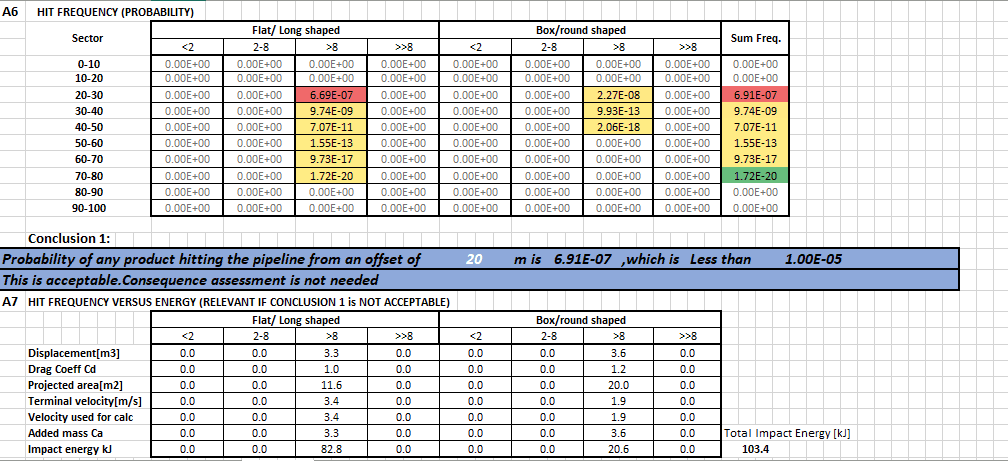
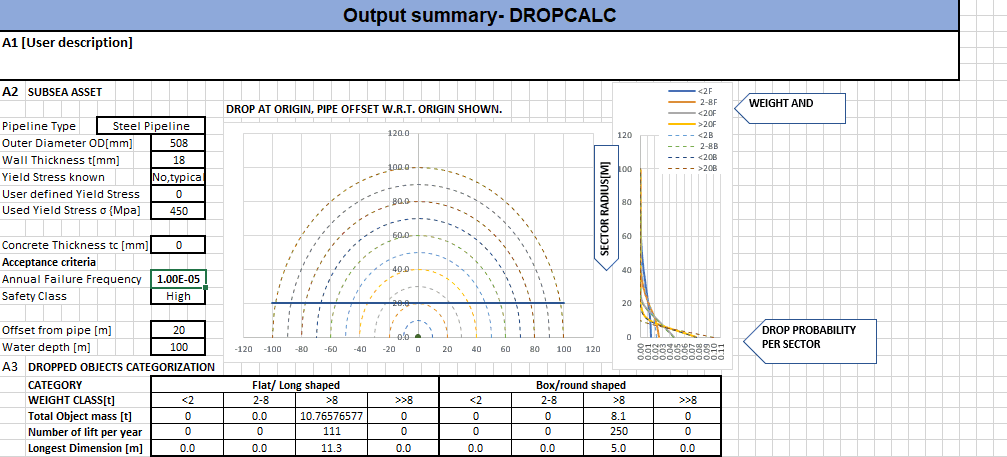
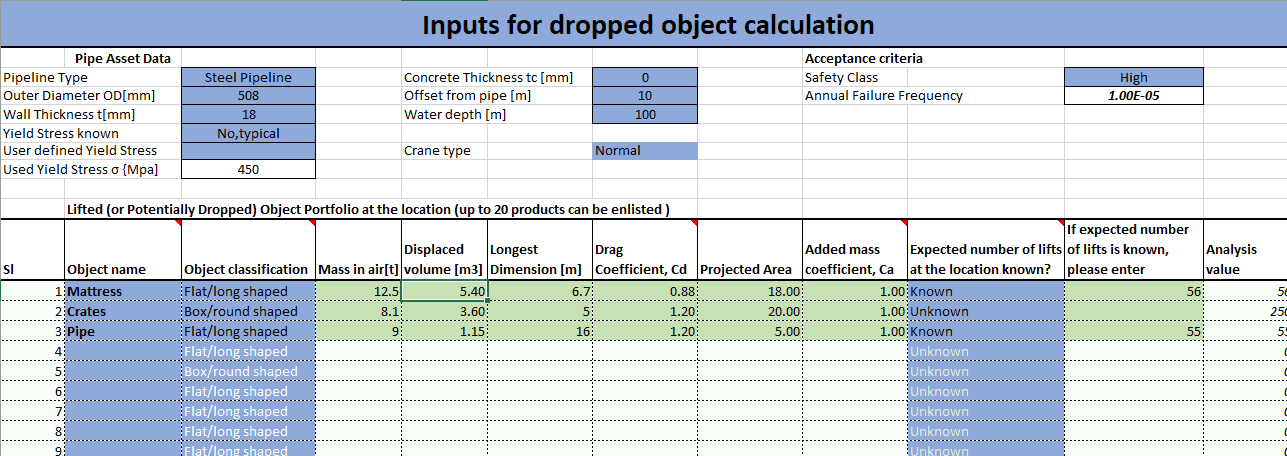

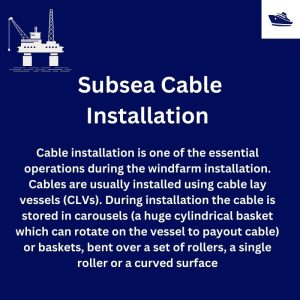
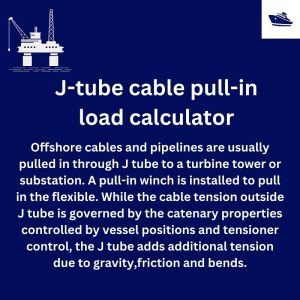
Reviews
There are no reviews yet